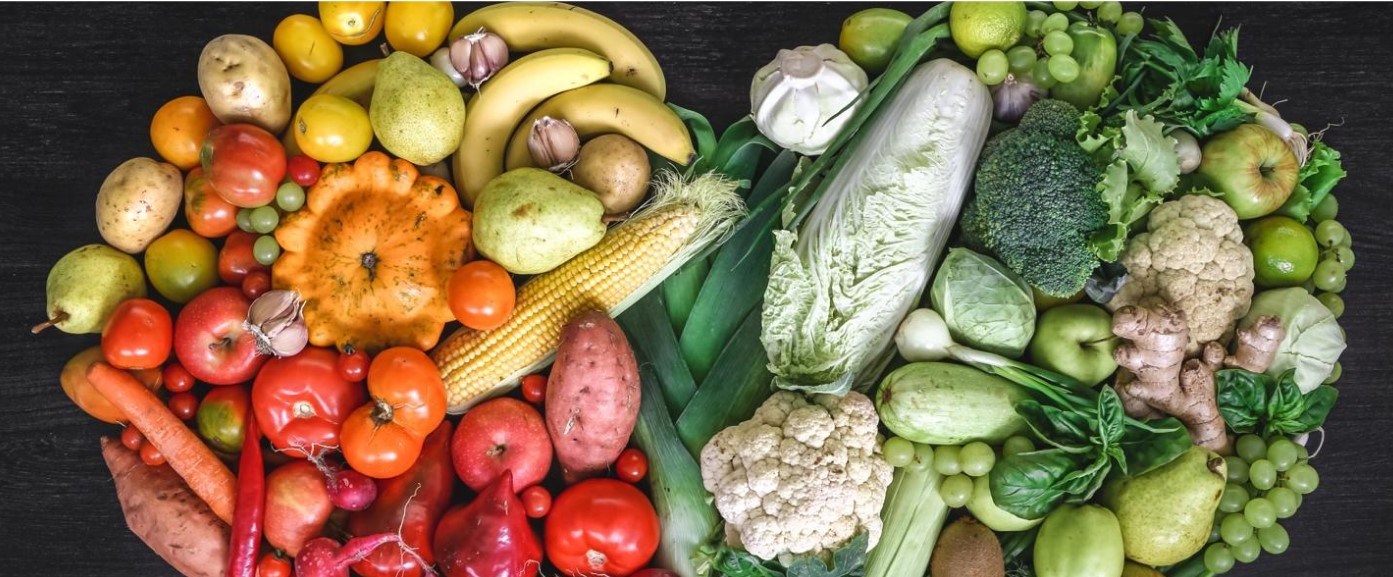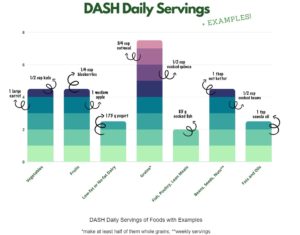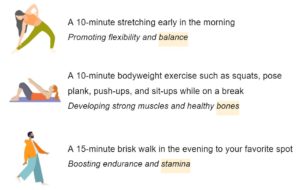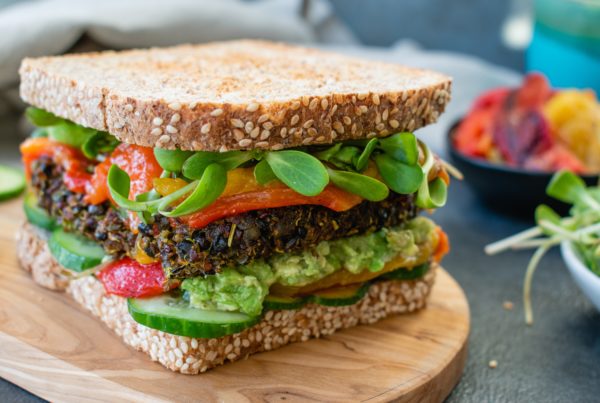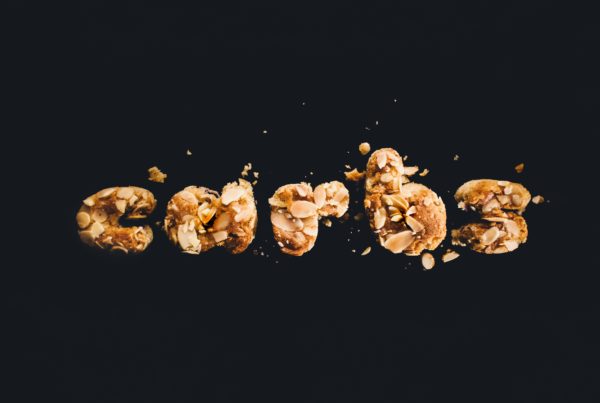According to Statistics Canada, diseases of the heart are the second most common cause of death after cancer. High blood pressure or hypertension is one of the main contributors to these statistics. The Heart and Stroke Foundation of Canada indicates that 9 in 10 Canadians will develop this condition during their lifespan, however, research shows that changes in lifestyle can significantly reduce these numbers. Scientists from around the world have been searching for the best approaches to lowering blood pressure by investigating the impact of different diets and physical activities on people’s health and well-being. One of the largest studies aimed at exploring the impact of the so-called DASH diet on blood pressure started around 25 years ago. Today, we will discuss this diet and other lifestyle changes that may help you get the healthiest heart to live longer and happier.
Reversing Heart Problems with Lifestyle Changes?
Yes, it might be hard to believe but research keeps proving that changes in your diet and physical activities can make a colossal contribution to your health. The data on research around the DASH diet and the recent updates from a variety of Healthcare authorities on the required level of physical activity bear witness to this. So, let’s dive deeper into all the details!
The DASH diet
So, what exactly is the DASH diet? First of all, DASH stands for Dietary Approaches to Stopping Hypertension. It is the most common diet that is determined to decrease high blood pressure and is widely recognized in the healthcare community. In other words, lots of doctors worldwide prescribe this diet to patients with hypertension! What makes this dietary approach even more advantageous is that lowering high blood pressure subsequently decreases your risk of heart failure, stroke, and kidney disease.
The concept of this diet has lots of similarities with the new Canada’s Food Guide. It also highlights the consumption of vegetables and fruits, whole grains and nuts, low-fat dairy products or dairy alternatives, and fish, poultry, and lean meats. However, there are three key ideas that this diet is mainly based on:
- Reduction in your daily salt intake (to the daily requirements).
- Increase in consumption of foods that are rich in potassium, magnesium, and calcium (those three are essential for your blood health!)
- Cut down on foods that are high in saturated fats and added sugars (fatty meats, coconut and palm oils, sugary beverages, candies, cookies, and other sweet products)
One of the drawbacks of this healthy heart diet is difficulties in planning the daily menu – DASH is based on servings like the old versions of Canada’s Food Guide. But don’t worry! The graph below has all the answers to what these confusing servings mean.
Physical Activities
Although the real cause of hypertension often remains unclear, lack of physical activity may play an essential role in developing this condition. The latest scientific data showed that 2.5 hours of moderate- to vigorous-intensity aerobic physical activity per week is enough to keep your heart healthy. The good news is that there is no requirement to have a 1-hour long training two or three times a week. Doing at least 10 minutes of yoga, dancing, or weight-bearing training at once will also have an important effect on your health. You also do not need to restrict yourself to specific physical activity. The more diverse it is the better. Try to find something that cheers you up! It can be activities that increase your endurance such as brisk walking or jogging or it can be something that promotes strength such as farming activity with all its carrying and lifting.
The Best Way to Incorporate DASH diet and Exercises in Your Routine
Due to our complex physiology, breaking a habit is not an easy task and requires lots of effort. That’s why a step-by-step guide on incorporating a new dietary pattern or exercise into your daily routine is essential. More importantly, the big part of making any changes is to be able to stick to them. For this reason, we prepared for you a quick guide that will help you make the first steps toward a healthier life!
1. Add new foods gradually without intentionally cutting down the usual ones
Make sure that you are not overloading your plate with new foods! In the beginning, it is better to serve your usual food with a small amount of the new ones. A few broccoli or cauliflower florets, apple slices, or baby carrots served along with your regular dinner will be the best solution in the long run.
2. Cut your salt intake by knowing how much you need
First, remember that you only need about ¾ of a teaspoon of table salt (1.5 g of sodium) a day. This amount is more than enough to satisfy your body’s needs. Checking the sodium content on the Nutrition Facts table on the food packages would help you a lot in your way of reaching this goal. Also, know that highly processed foods such as hamburgers or potato chips are usually high in sodium. Your favorite canned beans may contain that too, so rinse them before cooking next time. Try to buy fresh and frozen fruits and vegetables without added salt, and next time when eating out, don’t be shy to ask a server for sodium content information!
3. Incorporate physical activities into your already-established routine
For me, this one is the most challenging one. But it turned out that the fact that 10 minutes of exercise works the same way as non-stop training actually made a big difference! Try to have a plan for at least 5 days a week with a couple of short activities a day.
Why not try this to-do list for tomorrow?
The Bottom Line
The DASH diet is an evidence-based dietary approach to lower blood pressure. By eating lots of fruits and vegetables, low- and no-fat dairy, whole grains, fish, poultry, beans, and nuts while reducing the intake of foods that are high in saturated fat (e.g., full-fat dairy products, fatty meat, coconut oil), sodium (e.g., packaged meals, pizza, canned soups), and sugar you will reduce the risk of heart failure, stroke, and kidney disease.
Reviewed by Annie Tsang, RD
References
Appel, L.J., Moore, T.J., Obarzanek, E., Vollmer, W.M., Svetkey, L.P., Sacks, F.M., Bray, G.A., Vogt, T.M., Culter, J.A., Windhauser, M.M., Lin, P.-H., Karanja, N., Simons-Morton, D., McCullough, M., Swain, J., Steele, P., Evans, M.A., Miller, E.R., Harsha, D.W. & DASH Collaborative Research Group (1997). A clinical trial of the effects of dietary patterns on blood pressure. The New England Journal of Medicine, 336(16), 1117–1124. https://doi.org/10.1056/NEJM199704173361601
Bray, G.A., Vollmer, W.M., Sacks, F.M., Obarzanek, E., Svetkey, L. P., Appel, L.J., & DASH Collaborative Research Group (2004). A further subgroup analysis of the effects of the DASH diet and three dietary sodium levels on blood pressure: results of the DASH-Sodium Trial. The American journal of cardiology, 94(2), 222–227. https://doi.org/10.1016/j.amjcard.2004.03.070
Campos, C.L., Wood, A., Burke, G.L., Bahrami, H., & Bertoni, A.G. (2019). Dietary Approaches to Stop Hypertension Diet Concordance and Incident Heart Failure: The Multi-Ethnic Study of Atherosclerosis. American Journal of Preventive Medicine, 56(6), 819–826.
https://doi.org/10.1016/j.amepre.2018.11.022
Harvard T.H. Chan School of Public Health. (n.d.). Diet Review: DASH. https://www.hsph.harvard.edu/nutritionsource/healthy-weight/diet-reviews/dash-diet/
Heart and Stroke Foundation of Canada. (n.d.). The DASH Diet to lower high blood pressure. Retrieved October 8, 2022, from https://www.heartandstroke.ca/healthy-living/healthy-eating/dash-diet
McManus, K. D. (2019, July 25). The DASH diet: A great way to eat foods that are healthy AND delicious. Retrieved October 12, 2022, from https://www.health.harvard.edu/blog/the-dash-diet-a-great-way-to-eat-foods-that-are-healthy-and-delicious-2019072517326
Statistics Canada. (2022, December 24). Leading causes of death, total population, by age group. Retrieved October 11, 2022, from https://www150.statcan.gc.ca/t1/tbl1/en/tv.action?pid=1310039401
The National Heart, Lung, and Blood Institute. (2021, December 29). DASH Eating Plan. Retrieved October 8, 2022, from https://www.nhlbi.nih.gov/education/dash-eating-plan
Whitney, E. N., Rolfes, S. R., Hammond, G., Piché, L. A. (2015). Understanding Nutrition (2nd Canadian ed.). Lenore Taylor-Atkins.
